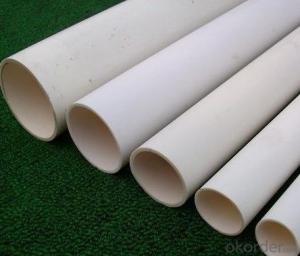Plastic Bulkhead Pipe Fittings: Waterproof Solutions
When it comes to plumbing, one of the most critical aspects is ensuring that all connections are secure and waterproof. This is where plastic bulkhead pipe fittings come into play. These are specially designed to create a tight seal and prevent any leaks, making them an essential component in any plumbing system.
The Importance of Waterproofing in Plumbing
Waterproofing is not just about preventing water damage; it’s also about ensuring the longevity and efficiency of your plumbing system. Leaks can lead to a variety of problems, from mildew and mold growth to structural damage and costly repairs. By using plastic bulkhead pipe fittings, you can rest assured that your plumbing system is well-protected against such issues.
How Plastic Bulkhead Pipe Fittings Work
Plastic bulkhead pipe fittings are designed with a unique structure that allows them to create a tight seal with the pipe. They are typically made from high-quality materials such as PVC, which is known for its durability and resistance to corrosion. The bulkhead fitting is inserted into a pre-drilled hole in the pipe, and then a gland nut is tightened around it to secure it in place. This creates a waterproof seal that prevents any water from leaking out.
Benefits of Using Plastic Bulkhead Pipe Fittings
There are several benefits to using plastic bulkhead pipe fittings in your plumbing system. Some of these include:
– Durability: Plastic bulkhead fittings are made from strong materials that can withstand the test of time. They are less likely to corrode or degrade compared to metal fittings.
– Easy Installation: Installing these fittings is a straightforward process that doesn’t require specialized tools or skills. This makes it an accessible option for DIY enthusiasts and professionals alike.
– Cost-Effectiveness: Compared to metal fittings, plastic bulkhead pipe fittings are more affordable, making them an attractive option for those looking to save on plumbing costs.
– Versatility: They can be used in a variety of applications, from residential homes to commercial buildings and even industrial settings.
– Resistance to Corrosion: As mentioned earlier, plastic fittings are resistant to corrosion, which means they can be used in environments where chemicals or saltwater may be present.
Common Types of Plastic Bulkhead Pipe Fittings
There are several types of plastic bulkhead pipe fittings available, each designed for specific applications. Some of the most common types include:
– Straight Bulkhead Fittings: These are used for straight connections and are ideal for situations where you need to connect pipes in a linear fashion.
– Elbow Bulkhead Fittings: Designed for making 90-degree turns in your plumbing system, these fittings are perfect for navigating tight spaces or changing the direction of your pipes.
– Tee Bulkhead Fittings: These fittings allow you to connect three pipes together, making them useful for creating branched connections in your plumbing system.
– Cross Bulkhead Fittings: Similar to tee fittings, but with four connection points, these are used when you need to connect multiple pipes in a central location.
DIY Tips for Installing Plastic Bulkhead Pipe Fittings
If you’re considering a DIY approach to installing plastic bulkhead pipe fittings, here are some tips to help you get it right:
1. Measure Twice, Cut Once: Always double-check your measurements before cutting the pipe to ensure a perfect fit.
2. Clean the Surface: Ensure the surface where you’ll be installing the fitting is clean and free of debris to create a better seal.
3. Use the Right Tools: While these fittings are easy to install, using the appropriate tools can make the process even smoother.
4. Tighten Gradually: When tightening the gland nut, do it gradually to avoid damaging the fitting or the pipe.
5. Test for Leaks: After installation, it’s crucial to test the connection for leaks to ensure the seal is secure.
Maintenance and Care of Plastic Bulkhead Pipe Fittings
Proper maintenance and care can extend the life of your plastic bulkhead pipe fittings. Here are some tips:
– Regular Inspections: Periodically inspect the fittings for signs of wear or damage.
– Clean Gently: If you need to clean the fittings, do so gently to avoid scratching or damaging the plastic.
– Avoid Harsh Chemicals: While plastic fittings are resistant to many chemicals, it’s best to avoid using harsh cleaning agents that could potentially damage them.
– Replace When Necessary: If a fitting is damaged or worn out, replace it promptly to maintain the integrity of your plumbing system.
The Future of Plastic Bulkhead Pipe Fittings
As technology advances, we can expect to see improvements in the materials and designs of plastic bulkhead pipe fittings. Innovations may lead to even more durable, cost-effective, and versatile options for homeowners and professionals alike.
In conclusion, plastic bulkhead pipe fittings offer a reliable and cost-effective solution for creating waterproof connections in your plumbing system. By understanding their benefits, knowing the different types available, and following proper installation and maintenance practices, you can ensure that your plumbing system remains secure and efficient for years to come.

